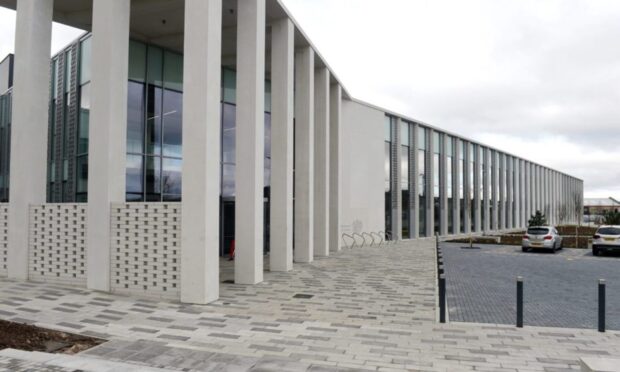Leading Scottish justice figures have called for specialist online domestic abuse courts to be created after successful trials in Aberdeen and Inverness.
The recommendation in a report by The Virtual Trials National Project Board claimed virtual trials could help with “increasing protection and reducing trauma for complainers; making it easier for witnesses to give their evidence”.
The board, led by Sheriff Principal Derek Pyle of Grampian, Highland and Islands, suggested every Sheriffdom across the country should have a dedicated virtual summary court for domestic abuse cases.
In May last year, the Scottish Courts and Tribunals Service (SCTS) set up a pilot project for virtual summary criminal trials to be conducted in Aberdeen and Inverness sheriff courts.
A review examined whether the proceedings ensured an accused received a fair trial.
According to a statement from the SCTS, the report concluded “they can” and explained: “No board member expressed concern over the assessing of credibility and reliability of witnesses in virtual trials and the report also determined that SCTS had delivered acceptable standards of audio and visual quality in the hearings and, subject to appropriate resourcing, can do so in the future.
“Feedback on the pilot virtual hearings from victims groups was overwhelmingly positive and took the view that virtual trials should have a place as part of a responsible, modern justice system, particularly given the benefits they can offer for victims.”
Those findings were presented to the Lord Justice General, Lord Carloway, who commented: “I fully support the recommendation of the Virtual Trials National Project Board that a virtual domestic abuse summary trial court should be established in each Sheriffdom.
‘Innovative and progressive’
“The pilot has clearly established the merit of this proposal. I congratulate the project board for their hard work and dedication to the project and their innovative and progressive thinking.”
But the report also warned that “additional cost in equipment and preparations for virtual trials” would be faced and stated the “necessary funding will be required for all parts of the justice system to enable virtual trials to operate successfully”.
There are currently around 33,000 summary trials waiting to go through the courts – about a quarter of them domestic abuse cases – compared with approximately 14,000 before the Covid crisis.
Reducing trauma
The report noted that “even the most optimistic forecast is that it will take until March 2024″ to return to pre-pandemic levels.
Reacting to the recommendation, Cabinet Secretary for Justice and Veterans Keith Brown said: “I welcome this report and the opportunity it presents to mitigate the impact of delays caused by the coronavirus pandemic on victims of domestic abuse, as well as reducing trauma.”
Victim Support Scotland Chief Executive Kate Wallace added: “This change is long overdue.
“People we support in domestic abuse situations have given feedback that this way of giving evidence is more appropriate, more trauma-informed and also means they will not come face-to-face with the accused in court.
“Many victims who have come through the criminal justice system have found going to court as traumatic as the crime itself. This is unacceptable.
“Being able to give evidence virtually puts choice and control back into the hands of people who have suffered from domestic abuse, which is especially important following the traumatic aftermath of crime.”













